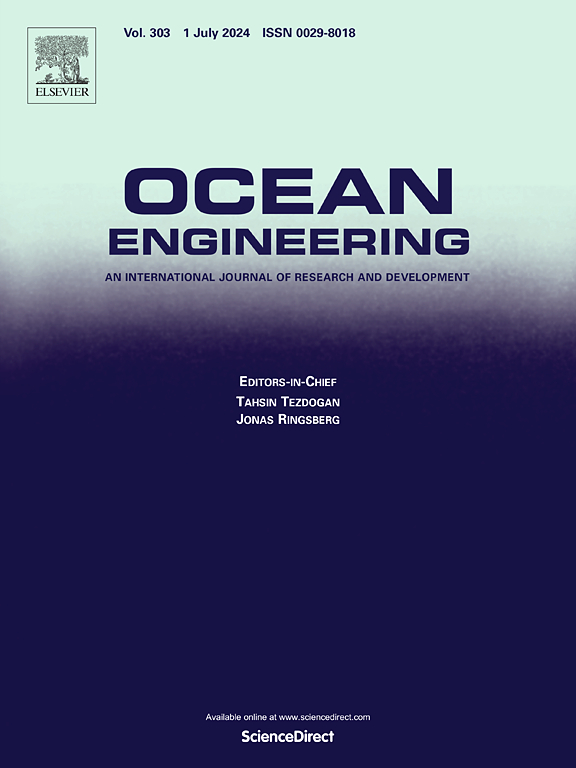Field test on the inclined installation performance of dynamically installed anchors
IF 4.6
2区 工程技术
Q1 ENGINEERING, CIVIL
引用次数: 0
Abstract
Dynamically Installed Anchor (DIA) utilizes high impact velocity via free fall to penetrate the seabed, offering efficient and low-cost mooring solutions. The embedment depth of DIAs depends significantly on installation quality, yet the inclined installation remains underexplored. This study conducted 19 field tests in clay, revealing embedment depths of 1.26–4.30 times the anchor length and inclination angles from 1.47° to 31.30°. Embedment depth loss remains minimal when the final inclination angle is within 14.69°, which occurs at an impact angle below 8.31° and an angular velocity under 4.99°/s. However, when the final inclination angle reaches 16.86°, embedment depth loss exceeds 0.5 times the anchor length. The inclination process consists of three stages: (1) a linear increase in inclination angle in the air with zero rotational moment; (2) a rapid followed by a gradual increase during initial penetration as soil resistance shifts the rotational moment from positive to negative; (3) stabilization at greater depths due to the surrounding soil resistance. A new effective diameter calculation method incorporating anchor inclination, applied to a logarithmic prediction formula, improves the accuracy. Comparative analysis shows that the resistance-based method is accurate with detailed soil data, while the energy-based method is efficient for preliminary assessments with limited soil information. This study provides practical insights into improving DIA installation reliability.
求助全文
约1分钟内获得全文
求助全文
来源期刊

Ocean Engineering
工程技术-工程:大洋
CiteScore
7.30
自引率
34.00%
发文量
2379
审稿时长
8.1 months
期刊介绍:
Ocean Engineering provides a medium for the publication of original research and development work in the field of ocean engineering. Ocean Engineering seeks papers in the following topics.
 求助内容:
求助内容: 应助结果提醒方式:
应助结果提醒方式:


